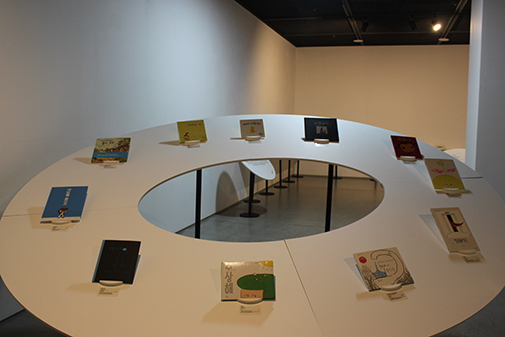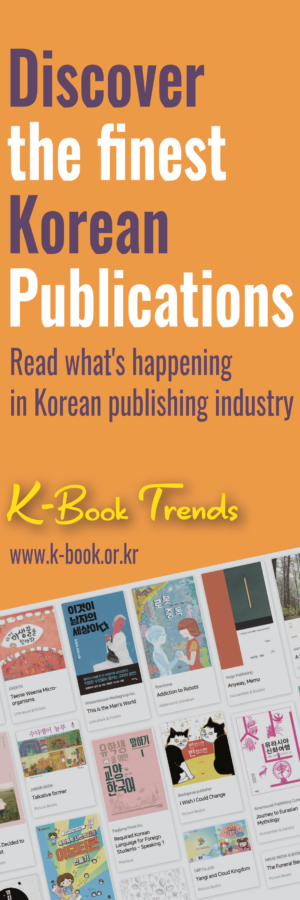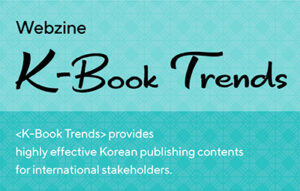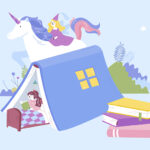Local publishing industry issues seen through bestseller and reader data analyses
2019.08.05
What kind of changes took place in the first half of 2019 for South Korea’s publishing industry? First of all, typical for the first six months of every year, there were many books that looked back on the previous year and set new goals for the current year. Books that carried serious ruminations about life were snapped up by readers. And for the first time in a long time, liberal arts books -mostly philosophical books, did better than books in other categories. Befitting the age of new media, various programs introducing books could be seen on television, YouTube, and podcasts. Also, due to a controversy over the Korean language section of South Korea’s national college entrance exam last year, educational books on the Korean language saw a surge in interest. This year will mark the 100th anniversary of the March 1 independence movement against Japanese colonial rule in Korea and the temporary Korean government that was established then. Sales of books on history have naturally increased, while books written by poets and novelists given new cover designs to meet recent trends were also popular.
Below is an explanation of the data from Kyobo Book Centre’s <2019 H1 Book Sales and Bestseller Analysis> report. When organized by genre, liberal arts books and publications on employment and job certifications rose year-on-year. Books on philosophy and psychology received high interest, and liberal arts books on a whole saw a 13.1 percent sales growth from a year earlier. Sales of books related to children, babies, life at home, and cooking also grew. Meanwhile, sales of novels dropped 14.1 percent on a yearly basis, while travel guidebooks also fared badly, challenged by mobile apps and real-time information provided on social media. Based on the number of books sold, educational book sales for middle to high school students took up 11.1 percent of total sales to mark the biggest portion for the first half of 2019. Books for children also saw growth while liberal arts books, after reporting tepid sales last year, touted a 7.7 percent share of sales.
When organized by readers’ gender, female readers continued to buy more books than men, making up 60.7 percent of reader sales. When categorized by age, readers in their 40s have been buying increasingly more books. Their interest in books is expected to grow as that particular generation has been found to purchase diverse types of books, from workbooks for their children to literature, hobby-related books, and technical books. Women in their 40s accounted for 21.5 percent of all readers, emerging as the core reader base for South Korea’s publishing industry.
<Percentage shares of readers categorized by gender, age>
| Age | Men | Women | Total |
|---|---|---|---|
| Younger than 10 years | 0.8% | 1.2% | 2.0% |
| 20s | 7.3% | 12.8% | 20.1% |
| 30s | 9.7% | 17.9% | 27.6% |
| 40s | 11.4% | 21.5% | 32.9% |
| 50s | 7.0% | 6.1% | 13.1% |
| Over 60 | 3.1% | 1.2% | 4.3% |
| Total | 39.3% | 60.7% | 100% |
When looking at how book sales channels have changed, mobile sales have especially surged.
This is a change worth noting as books have traditionally been consumer goods that are physically observed beforehand.
How sales channels for books have changed has been something to focus on. Mobile purchases on phones have risen sharply compared to offline or regular online sales. Other consumer goods have seen demand from mobile applications, but this change for books has been unique in the fact that traditionally, books have been consumer goods that readers looked at physically before purchasing them. In the case of Kyobo Book Centre, its direct delivery service where users can purchase a book on the store’s app and receive the physical book at a store branch has played a big part in boosting mobile purchases. In the first half of this year, mobile purchases took up 27.8 percent of all sales, overtaking web sales.
When looking at bestseller trends overall for the first half of 2019, they can simply be summarized as ‘the return of liberal arts’. Buddhist monk Haemin Sunim’s <Love for Imperfect Things> stood at number one in terms of overall sales in the first six months of the year, followed by Yamaguchi Shu’s <How Philosophy Becomes a Weapon of Life>. In 2018, not one book on liberal arts made it to the top ten list. However, this year in the first half, <How Philosophy Becomes a Weapon of Life> and <The 12 Rules of Life> both made it to the top ten, showing how liberal arts has made a comeback. When looking at the top 100 bestselling books, there were 19 liberal arts related books on the list, making it the most popular out of any other genre. When looking at percentage shares per genre, liberal arts surpassed those of its old competitors like poetry, novels and essays.
In the first half of 2019, demand became more balanced whereas previously it was more one-sided, creating a meaningful change. The top 10 bestseller list shows the consumer gender imbalance has become more balanced, with the ratio of female to male book purchasers standing at 6:4 in the first half of 2019. When looking at genres, there were 5 essay collections in the top 10 list, extending their popularity from 2018. Kim Su-Hyun’s <I Have Decided to Live As Me> and poet Na Tae-Ju’s <I See You As I Would A Flower> would be representative of the genre, which showed more diversity this year in a positive change.
<Sales shares of top 10 bestsellers in H1 2018 based on gender>
| Position | Book Title | Men | Women |
|---|---|---|---|
| 1 | How To Respond Smiling To A Rude Person (Gana) | 21.3% | 78.7% |
| 2 | Ji-young Kim Born in ’82 (Minumsa) | 21.9% | 78.1% |
| 3 | Every Moment Was You (Wisdom House) | 31.8% | 68.2% |
| 4 | Pooh Bear, Happiness Comes Every Day (RH Korea) | 22.1% | 77.9% |
| 5 | Temperature of Language (Malgeulteo) | 33.1% | 66.9% |
| 6 | The Subtle Art of Not Giving a F*ck (Galleon) | 40.6% | 59.4% |
| 7 | I Have Decided To Live As Me (Maumsup) | 21.7% | 78.3% |
| 8 | Miracles of the Namiya General Store (Hyundae Munhak) | 31.3% | 68.7% |
| 9 | Word Plate (Cassiopeia) | 28.3% | 71.7% |
| 10 | The Whereabouts of Love (Somi Media) | 27.6% | 72.4% |
<Sales shares of top 10 bestsellers in H1 2019 based on gender>
| Position | Book Title | Men | Women |
|---|---|---|---|
| 1 | Love for Imperfect Things (Suo Books) | 33.5% | 66.5% |
| 2 | How Philosophy Becomes a Weapon of Life (Dasan Chodang) | 52.9% | 47.1% |
| 3 | I Have Decided To Live As Me (Maumsup) | 26.4% | 73.6% |
| 4 | Why Travel (Munhakdongne) | 31.0% | 69.0% |
| 5 | Pooh Bear, Happiness Comes Every Day (RH Korea) | 29.9% | 73.1% |
| 6 | I See You As I Would A Flower (Jihye) | 30.9% | 69.1% |
| 7 | The Murder Incident of the Stuffed Doll (Book Plaza) | 33.0% | 67.0% |
| 8 | The 12 Rules of Life (Maven) | 52.3% | 47.7% |
| 9 | I Accidentally Worked Hard At Life (Woongjin Jisikhouse) | 31.3% | 68.7% |
| 10 | The Irreversible Promise (Book Plaza) | 36.8% | 63.2% |
Another key trend for the first half of the year was that female authors published many books. Novels had fallen into a slight rut, and female writers were the saving grace for the genre. Cho Nam-Joo’s <Ji-young Kim Born in ’82> topped the list for novels, and the book’s popularity shows no sign of slowing down. In addition to Cho, other young female authors have been enjoying high demand, like Kim Geum-hee, Kim Ae-ran, Lee Do-woo, and Choi Eun-young. Gu Byung-mo and Chung Se-rang saw three books each make it to the top 30 bestselling novel list. Among the top 10 bestselling novels in South Korea, eight were written by female authors (the other two were award recipients), showing their active performance. However, on an overall basis, the share of novels for sales shrank to 7.3 percent this year from 9.1 percent a year ago. The number of published books was similar this year, but the lack of popular media-sellers or giant bestsellers led to a dismal number of sales.
As mentioned above, the number of readers in their 40s, including men and women alike, has been increasing rapidly. The portion of the age group out of all readers stood at 22.7 percent in 2010. The same age group made up 32.9 percent of all readers in the first half of 2019, making it the biggest share out of all age groups. This boost in readers in their 40s had a big influence on book purchasing trends. Particularly, this age group was seen buying books for their children from books for young children to educational workbooks for middle to high school students. In 2010, 24-year-olds (born in 1986) bought the most books that year, whereas the next year again saw 24-year-olds (born in 1987) buy the most books. However, in 2016, this jumped to 46 (born in 1970) and has remained above 40 since then. As of the end of June this year, 41-year-olds have (born in 1978) have purchased the most books so far.
Despite the sluggishness in the publishing market, more young children have started to read books, leading to a boost in sales of fairy tales and book series. Sales in the first half of the year for children’s books rose 13.5 percent, and the genre accounted for 7.9 percent of all sales. Readers tended to prefer books that offered both education and entertainment like Heena Baek’s <I Am A Dog (Bear Books)>, Seol Min-Seok’s <Seol Min-Seok’s Great Adventure into Korean History (iHuman)> and <Genius Butt Detective and the Curry Mystery (Iseum)>. Also, in spite of economic difficulties nationwide, South Koreans spent more on education and workbooks than a year ago. This focus on education affected sales of workbooks for elementary, middle and high school students. Workbook sales for elementary school students jumped 33.4 percent on-year, and English workbooks for children saw sales grow 18.4 percent over the same period. Educational book sales for middle to high school students also marked double-digit growth, showing sustained interest by consumers in education.
Due to this new influence, several books that put together content from popular podcasts, including foreign languages, liberal arts and art in general, were published. YouTube channels were a hot topic in the book market at the start of 2019.
In the first half of 2019, media-sellers like books that featured in movies, television dramas or were turned into adaptations did not gain much interest. In contrast, books exposed by new media drew attention. Due to this new influence, several books that put together content from popular podcasts, including foreign languages, liberal arts and art in general, were published. YouTube channels were a hot topic in the book market at the start of 2019. The power that ‘booktubers’ have by summarizing books on their YouTube channels has grown and bestsellers that are featured on such channels have shot up in popularity. Books that were published years ago like Oprah Winfrey’s <What I Know For Sure (Book House)> and Paulo Coelho’s <The Alchemist (Munhakdongne)> have both seen popularity anew thanks to these YouTubers, rising to become bestsellers again.
E-books sustained steady growth in the first half of 2019. Out of all genres that were provided in digital format, BL (Boys’ Love) stories and romance novels have been the most popular. Novels accounted for 62.5 percent of all e-book sales in the first half of 2019, making it the central genre for the industry. The number of new e-book readers has also been on the rise, thanks to genre literature. Unlimited subscription services have grown popular among young readers with their competitive pricing. Distributors are signing exclusive contracts directly with writers and agencies for publications and series uploads to dominate more content on the market. In the physical book market, novels have been on the decline, but novels in the e-book market shot up 48.9 percent from a year ago, increasing its growth from last year. More exclusive content for e-books is being continuously developed, including audiobooks and multimedia e-books. In general, novels that were originally comics or e-books based on novels have received good responses.
<Number of Book Unit Sales and Percentage Share for Genre Literature e-Books>
| Genres | Growth in sold units | Percentage Share(%) | |
|---|---|---|---|
| 2018 | 2019 | 2019 | |
| Romance | 5.8% | 56.6% | 54.4% |
| Martial Arts | 20.4% | -10.1% | 4.4% |
| Fantasy | -9.4% | 15.4% | 15.5% |
| Light Novels | 118.1% | 132.4% | 4.3% |
| BL | 50.5% | 72.7% | 20.6% |
| Adult Novels | – | 147.2% | 0.8% |
| Total | 11.0% | 48.9% | 100% |
In the second half of 2019, the trends seen in the first six months are expected to go on. Novels are expected to make a bit of a comeback compared to the weakness they have shown so far, thanks to the return of authors like Jo Jung-Rae, Jeong You-Jeong, Choi Eun-young, and Bernard Werber. The latest publications from popular Korean authors like Kim Young-ha, Rhyu Si-min, and Choi Tae-Seong have risen in popularity as the authors have appeared on multimedia programs. Readers’ interest in economics, management, science, and philosophy in step with the age of the 4th industrial revolution is expected to continue, and the industry expects more books dealing with these subjects to enter the market. Topics of interest also include historical relations between South Korea and Japan, which are currently a big issue in the news due to bilateral political tussles. Books on peace between the two Koreas and the United States are projected to be popular. Publications that aim to help readers understand social conflicts between gender groups and age groups will also attract consumers, while more books are expected to be published on future forecasts, the upcoming U.S. presidential election, and South Korea’s parliamentary election. As we are living in an age of swift change in politics, the economy, society, and culture, these issues are expected to affect publishing plans and production.
In the case of the distribution market, physical books are expected to be distributed mainly by large-scale bookstores and enterprise used-book store chains. However, the popularity of independent bookstores is expected to go on. When considering the high usage rate of smartphones in South Korea, online and mobile sales of books are expected to continue rising in the second half of the year. The e-book market will also see expansion in the second half thanks to genre literature. For the rest of the year, the e-book market is likely to see the competition grow in earnest between providers of subscription services and creators of original content. In the age of smart media, readers are now listening to books more rather than reading them with their eyes. Globally, audiobooks are seeing high interest, and in South Korea, companies that have audio platforms like Naver, Kyobo Book Centre, Audien, and Podbbang have been expanding their investments and services. The South Korean government and other institutions have also been pursuing their own audiobook support projects. In the second half of 2019, the publishing industry is projected to see more diverse attempts and meaningful growth in all media and channels, including production, distribution, and reading activities.
Written by Ryu Young-ho (Director of Kyobo Book Centre’s content business division)
Research from <2019 H1 Book Sales and Bestseller Analysis (Kyobo Book Centre)>














